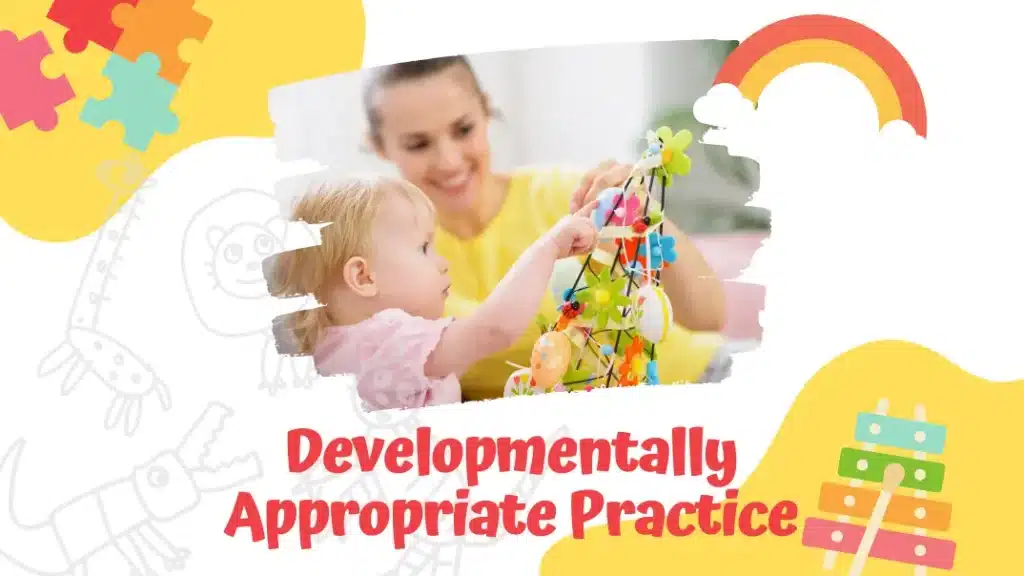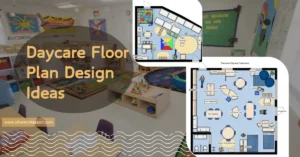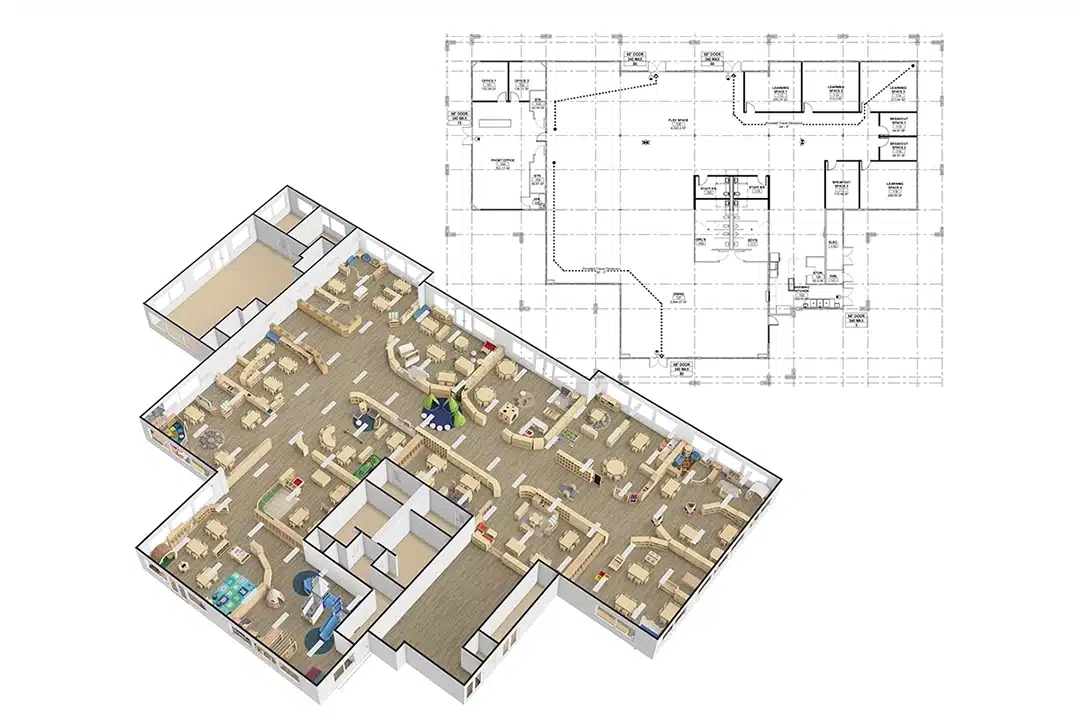As a parent, educator, or school administrator, you’ve likely come across the term Developmentally Appropriate Practice (DAP) in discussions about early childhood education. But what exactly does this term mean? Why is it so crucial to the success of young learners, and how can it be implemented in your classrooms or educational settings? Understanding DAP is the key to providing a learning environment that truly supports the developmental needs of children.
When it comes to early childhood education, teachers and caregivers face the significant task of ensuring their educational practices meet the individual needs of young learners. This is where the concept of Developmentally Appropriate Practice (DAP) comes into play. At its core, DAP is about creating environments, activities, and curriculum that are tailored to the age, ability, and cultural background of children.
To better understand how DAP works in practice, it’s helpful to break it down into its core principles and elements. By doing so, you can create an environment where children feel safe, respected, and encouraged to grow and learn. The following sections will explore the importance of DAP, its key components, and practical examples of how to integrate it into early childhood education settings.
Developmentally Appropriate Practice Definition
Developmentally Appropriate Practice (DAP) refers to a set of guidelines and best practices designed to help early childhood educators create learning environments that align with children’s developmental needs, abilities, and interests. Grounded in decades of research on child development, DAP emphasizes that teaching must be adapted to the individual child’s age, temperament, and cultural background to be truly effective.
At its core, DAP fosters an environment that considers not just academic growth but also emotional, social, and physical development. For instance, what works for a three-year-old may not work for a seven-year-old, as children develop at different rates. DAP offers a holistic approach that balances structure and flexibility, allowing children to explore, play, and learn at their own pace, while ensuring they are constantly supported and challenged in ways that match their abilities.
DAP’s role in early childhood education is crucial. It ensures that young learners are not only taught academic skills but are also nurtured socially and emotionally, setting the foundation for lifelong learning. When applied properly, DAP can promote confidence, curiosity, and resilience, leading to stronger academic outcomes and healthier emotional development.

Benefits of Developmentally Appropriate Practice
Implementing DAP has a wide array of benefits that extend beyond academic performance. By focusing on developmental, individual, and cultural needs, DAP supports children in a holistic manner. Some of the key benefits of Developmentally Appropriate Practice include:
- Supports Emotional Growth: Children thrive emotionally when they feel understood, supported, and respected. DAP creates an environment where children feel secure enough to explore their world and express themselves.
- Fosters Social Skills: By emphasizing collaborative learning and emotional regulation, DAP helps children develop crucial social skills, such as sharing, listening, and problem-solving.
- Enhances Cognitive Development: DAP encourages children to engage in challenging yet achievable learning experiences that promote critical thinking, creativity, and curiosity.
- Promotes Inclusivity: DAP is an inclusive approach that adapts to the needs of all children, regardless of their background, ability, or learning style. It ensures that every child has an equal opportunity to succeed.
- Builds Self-Esteem: Children who receive developmentally appropriate instruction feel competent and capable, leading to higher self-esteem and a positive attitude towards learning.
- Long-Term Academic Success: Children who are taught using DAP principles tend to be more motivated, more engaged in their education, and more likely to perform well academically as they progress through school.
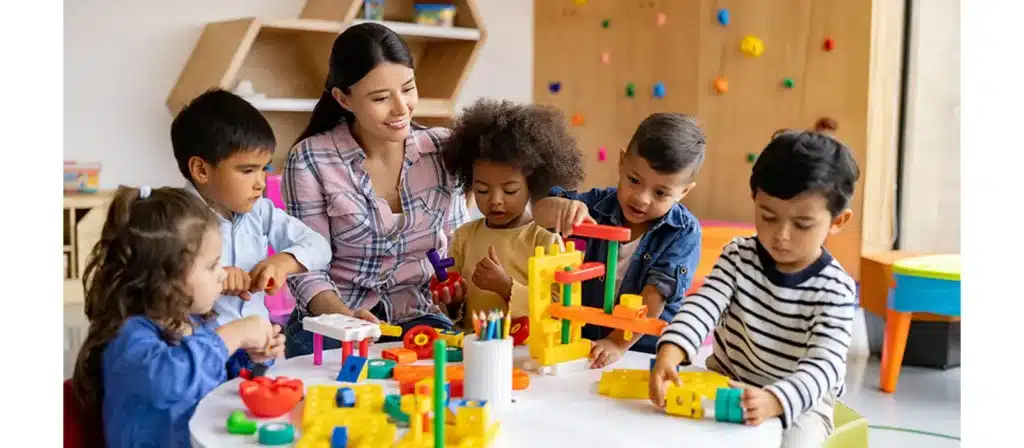
3 Core Factors of Developmentally Appropriate Practice
Developmentally Appropriate Practice is grounded in three core factors that shape its implementation. These factors allow educators to assess what is appropriate for each child and tailor their educational practices accordingly.
1. Child Developmental Appropriateness
Understanding child development is essential in implementing DAP. Children go through predictable stages of growth, and their learning needs vary at each stage. For instance, infants need sensory stimulation and emotional connections with caregivers, while preschoolers benefit from activities that develop problem-solving skills and social cooperation. Teachers who understand these developmental milestones can create learning activities that match children’s cognitive and emotional levels, ensuring they’re neither under-challenged nor overwhelmed.
2. Individual Appropriateness
Every child is unique, and DAP recognizes the importance of addressing individual differences. While developmental stages are broadly predictable, each child may reach these milestones at different rates. Some may need extra time to develop certain skills, while others might advance more quickly. The focus is on individualizing the learning process, providing children with opportunities for growth based on their strengths, weaknesses, and interests. Teachers adapt their approaches based on each child’s needs, promoting a positive and supportive classroom environment.
3. Social and Cultural Context
Children’s learning is not only shaped by their developmental stages but also by their social and cultural contexts. The families and communities children come from greatly influence how they learn, communicate, and engage with the world. Developmentally Appropriate Practice encourages educators to embrace diversity and integrate culturally relevant content into the curriculum. By doing so, children feel seen, respected, and understood. This helps foster a sense of belonging and provides opportunities for children to learn about different perspectives and experiences, encouraging empathy and respect for diversity.

The History of Developmentally Appropriate Practice
The concept of Developmentally Appropriate Practice was introduced by the National Association for the Education of Young Children (NAEYC) in 1986. However, its roots can be traced back to earlier educational theorists like John Dewey and Maria Montessori, who emphasized the importance of a child-centered approach to learning.
Origins of Developmentally Appropriate Practice
In the 1980s, the rise of standardized testing and a push for academic rigor in early education led to concerns that young children’s developmental needs were being overlooked. The NAEYC sought to address these concerns by promoting practices that support developmentally sound learning environments.
Key Contributors to DAP Theory
Prominent figures such as Carol Seefeldt and Nancy L. Chavkin played key roles in articulating the principles of DAP and advocating for its widespread adoption across early childhood education settings.

Principles of Developmentally Appropriate Practice
The National Association for the Education of Young Children (NAEYC) has outlined 12 principles of DAP, which serve as a guide for educators in creating environments that promote positive developmental outcomes. These principles are founded on research in child development, reflecting the importance of understanding the whole child.
Child Development Knowledge:
Educators must understand the typical and atypical patterns of child development, which encompasses cognitive, emotional, social, and physical growth. Knowledge about how children think, learn, and interact with their environment allows educators to create experiences and activities that align with children’s developmental stages.
Individual Differences:
Every child is unique, with their own pace of development, personality, background, and learning style. DAP emphasizes that teaching should be individualized to meet each child’s needs, strengths, and interests. Educators should take into account a child’s cultural background, family dynamics, temperament, and language development, and adjust their teaching methods to foster each child’s growth effectively.
Learning Environment:
A developmentally appropriate learning environment is one that is safe, engaging, and thoughtfully designed to encourage exploration and discovery. It should offer a mix of materials and activities that promote creativity, problem-solving, and social interaction. A supportive environment also allows for both structured activities and opportunities for free play, fostering a balance between guidance and independence.
Positive Relationships:
Positive, nurturing relationships with adults and peers are central to a child’s emotional and social development. Educators should build strong, trusting relationships with children, providing consistent care and responding to their emotional and developmental needs. These relationships are the foundation for children’s sense of security and confidence, which in turn enables them to engage fully in learning opportunities. Educators should also model appropriate social behaviors, including empathy, cooperation, and conflict resolution.
Play-Based Learning:
Play is the primary way young children learn. DAP emphasizes the importance of play as a vehicle for exploration, problem-solving, and social development. Through play, children can experiment with ideas, practice new skills, and learn about the world around them. It is essential for educators to provide ample opportunities for both structured and unstructured play, facilitating environments where children can engage in imaginative play, dramatic role-playing, and hands-on activities that foster cognitive, physical, and emotional growth.
Curriculum:
The curriculum should be flexible, child-centered, and based on the developmental needs, interests, and abilities of the children. A developmentally appropriate curriculum includes a variety of activities and experiences that promote all areas of development—cognitive, social, emotional, and physical. It should be responsive to the children’s needs and build on what they already know, offering both challenges and opportunities for success.
Assessment:
Ongoing, authentic assessments are key to understanding each child’s development and progress. Assessments should be based on observation and documentation of children’s behaviors, work samples, and interactions, rather than relying solely on formal tests. These assessments help educators tailor their teaching strategies to meet the children’s needs. Reflecting on assessment results enables teachers to modify learning experiences, provide additional support where necessary, and celebrate each child’s developmental achievements.
Cultural Competence:
Early childhood educators must understand and respect the diverse cultural, linguistic, and familial backgrounds of the children in their care. DAP encourages educators to incorporate children’s home languages, cultural practices, and community values into the learning environment. This promotes an inclusive atmosphere where all children feel valued and respected. Educators should also help children develop an appreciation for diversity and learn to understand and celebrate differences, fostering global citizenship and empathy.
Family Engagement:
Families are the first and most influential educators in a child’s life. Building strong partnerships with families is a core principle of DAP. Educators should engage families in the learning process by regularly communicating with them, sharing progress updates, and involving them in school activities. Teachers should also respect the unique knowledge and perspectives that families bring to the educational process, creating a sense of community between the home and the learning environment. This partnership enhances children’s overall development and supports continuity between home and school.
Health and Safety:
A developmentally appropriate practice includes maintaining a clean, well-organized space that promotes physical health and safety. This includes ensuring proper hygiene practices, providing nutritious meals, and maintaining a safe classroom layout free of hazards. Educators should also model healthy habits, such as washing hands regularly, eating balanced meals, and exercising.
Developmentally Appropriate Expectations:
Setting realistic expectations for children means understanding where they are developmentally and planning activities and goals that match their developmental stage. DAP stresses the importance of not pushing children beyond their abilities but also challenging them to grow and explore. Educators should avoid setting unrealistic standards or imposing expectations that cause frustration or anxiety.
Professionalism:
Educators should engage in ongoing professional development to stay informed about the latest research and best practices in early childhood education. This includes participating in workshops, attending conferences, and engaging in reflective practices. DAP emphasizes the importance of collaboration and teamwork among educators, sharing insights, strategies, and ideas for the benefit of children. Maintaining high standards of professional ethics, advocating for children’s rights, and engaging in continuous self-reflection ensures that educators provide the best care and learning experiences for young children.
These nine principles form the foundation of DAP and guide educators in their daily practice. They encourage teachers to view children as active participants in their own learning, rather than passive recipients of information. When applied consistently, these principles help create a balanced and developmentally sound educational experience.

How Does Developmentally Appropriate Practice Support Child Development?
- DAP and Learning Through Play
One of the cornerstones of Developmentally Appropriate Practice is learning through play. Play allows children to explore, experiment, and discover new concepts in a low-pressure environment. It nurtures cognitive, physical, and emotional growth, allowing children to make sense of the world around them. Through play, children learn important skills such as problem-solving, cooperation, and emotional regulation. - DAP and Infants and Toddlers
For infants and toddlers, DAP focuses on creating a secure environment where children can explore sensory experiences. Caregivers provide appropriate stimulation, engage in face-to-face interactions, and establish trust and attachment. This lays the foundation for healthy emotional development and social bonding. As infants develop, DAP encourages activities that promote motor skills, language acquisition, and emotional expression. - DAP and Preschoolers
Preschoolers benefit from a balanced approach that combines structured learning with free play. DAP for preschoolers encourages them to experiment with basic concepts like numbers, letters, and shapes through hands-on activities. It also helps children develop emotional intelligence by teaching them how to manage feelings and resolve conflicts. - DAP and Elementary School
As children move into elementary school, Developmentally Appropriate Practice shifts toward fostering independence and critical thinking. Learning activities in the elementary grades focus on building foundational academic skills while also promoting social and emotional maturity. Group projects, problem-solving tasks, and creative expression all play a role in helping children thrive in a more structured environment.

Strategies and Methods for Applying Developmentally Appropriate Practice
In order to successfully apply Developmentally Appropriate Practice (DAP), educators need to carefully consider their strategies. DAP is not a one-size-fits-all approach, but rather a framework that is shaped by the developmental stages, individual needs, and social contexts of children. Below are some key strategies for implementing DAP.
1. Community of Learners
When children are placed in an environment where they feel safe, respected, and valued, they are more likely to thrive both academically and socially. In a community of learners, the classroom becomes a place where children learn from each other and from their teachers in an environment that promotes social interactions and cooperation.
Creating this type of environment means intentionally promoting group work, discussions, and peer learning. Teachers can facilitate group activities that require collaboration, problem-solving, and shared decision-making. These activities help children develop essential social skills like empathy, conflict resolution, and communication.
2. Instruction
Instruction in Developmentally Appropriate Practice classrooms should be tailored to meet the developmental needs of individual children. This involves creating engaging, hands-on learning experiences that are both appropriate for the child’s current developmental stage and intellectually stimulating. For example, for younger children, a teacher might use interactive play-based learning, while for older children, more structured lessons in areas like mathematics or reading might be introduced.
Differentiated instruction is a vital aspect of DAP. Teachers should be able to adjust their teaching methods to cater to the diverse learning styles and abilities of the children in their classroom. This can include offering various forms of instruction, such as visual aids, hands-on materials, or verbal explanations, to ensure that all students can access the learning content.
3. Curriculum
A DAP curriculum is one that is both comprehensive and flexible, reflecting the diverse needs of the children. It includes a balance of structured activities and opportunities for exploration. A curriculum designed with DAP principles in mind allows for the integration of different subject areas in a way that feels relevant to the children.
Importantly, a DAP curriculum is built with a child’s cultural background, family experiences, and individual needs in mind. Educators work to ensure that the content is meaningful and relatable, enabling all children to connect with and engage in the learning process.
4. Assessment
Assessment within DAP should be ongoing, individualized, and reflective. Instead of relying on traditional tests or one-time evaluations, DAP assessment focuses on observing and tracking a child’s growth over time. Teachers can gather information through interactions, observations, and work samples, all of which help paint a holistic picture of a child’s developmental progress.
This type of assessment informs teaching strategies, allowing educators to adjust their approaches based on each child’s needs. For instance, if a child is struggling with a particular skill, the teacher might provide targeted interventions or adjust their teaching method to offer more support. Conversely, if a child excels in a particular area, teachers can provide additional challenges to further develop that skill.
5. Implemented in Partnership with Families
Developmentally Appropriate Practice means successfully requires strong partnerships between educators and families. Parents and caregivers offer valuable insights into a child’s developmental history, interests, and challenges. When teachers and families work together, they create a more cohesive support system for the child, both at school and at home.

Examples of Developmentally Appropriate Practice
Now that we’ve discussed the strategies for applying DAP, let’s look at specific examples of DAP in action. These examples will show how DAP is implemented in different developmental areas, such as social, cognitive, emotional, and physical skills.
Developmentally Appropriate Practice Example 1: Social Skills
Children’s social skills are integral to their overall development, and DAP focuses on fostering positive interactions among peers. A simple yet effective example is collaborative play in a preschool classroom. During playtime, children are encouraged to work together on projects like building a structure with blocks, sharing resources, and problem-solving together. This type of cooperative play promotes the development of social skills such as communication, teamwork, and conflict resolution.
Teachers also play an important role in guiding children’s social interactions. By modeling respectful behavior, recognizing emotions, and intervening when necessary, educators help children understand the importance of empathy, listening, and self-regulation in social contexts.
Developmentally Appropriate Practice Example 2: Cognitive Skills
In Developmentally Appropriate Practice, cognitive development is nurtured through activities that encourage children to think critically and solve problems. For example, teachers might introduce puzzles or games that challenge children to make decisions, test their hypotheses, and learn through trial and error. Activities that promote cognitive development can range from simple matching games for younger children to complex problem-solving tasks for older children.
Another example is reading aloud. When teachers read stories to children, they can ask open-ended questions that stimulate thinking and encourage children to make predictions, recall information, and engage with the story on a deeper level. Cognitive development in DAP isn’t about rote memorization, but about encouraging children to think independently and creatively.
Developmentally Appropriate Practice Example 3: Emotional Skills
Emotional development is also a major focus of DAP. Teachers in developmentally appropriate settings help children understand and regulate their emotions. For example, a teacher might use a “feelings chart” where children can express how they feel by pointing to pictures that represent different emotions. This helps children recognize their feelings and gives them a language to express how they feel.
In addition, teachers can guide children through activities that encourage emotional expression, such as art projects or storytelling. These activities provide children with the opportunity to explore their feelings in a safe and supportive environment.
Developmentally Appropriate Practice Example 4: Physical Skills
Physical development, both fine and gross motor skills, is another crucial aspect of DAP. Teachers might incorporate activities that promote fine motor skills, such as cutting with scissors, drawing, or building with small blocks. These activities help children develop the hand-eye coordination necessary for later tasks, like writing.
On the other hand, gross motor activities such as running, jumping, climbing, and dancing help children build physical strength, coordination, and balance. Teachers encourage these activities by setting up safe play environments where children can explore movement and engage in physical activity.

Developmentally Appropriate Practice Example 5: Language and Literacy
Language and literacy development is foundational in any early childhood setting. DAP-aligned classrooms are designed to immerse children in rich spoken language and emerging print experiences. Teachers engage children through daily storytelling, singing, conversation, and early writing exploration. But the environment plays a huge role in this learning process. Book displays at eye level invite browsing. Comfortable reading corners encourage focused attention.
Writing areas stocked with crayons, paper, and letter stamps let children practice self-expression. Our reading nooks, adjustable writing tables, and forward-facing bookshelves all support these functions. Children must feel that language is both seen and heard, and that their voices matter.
Developmentally Appropriate Practice Example 6: Creative Expression
Creative exploration is essential in DAP classrooms. Children are not told what to draw or how to sing; they are provided materials and encouraged to express themselves. Artistic expression isn’t limited to the art corner. It flows into music, movement, storytelling, and construction play. The furniture and environment must support open-ended creation: easels that hold large paper, accessible bins filled with fabric, beads, or clay, and musical play zones with drums and xylophones.
We design modular art tables and display racks that showcase children’s work as a reflection of their identity. Dramatic play areas, too, allow for self-expression through imitation and storytelling. Our pretend play kitchens, market stalls, and dress-up furniture are designed for this very purpose—to encourage imagination without limits.
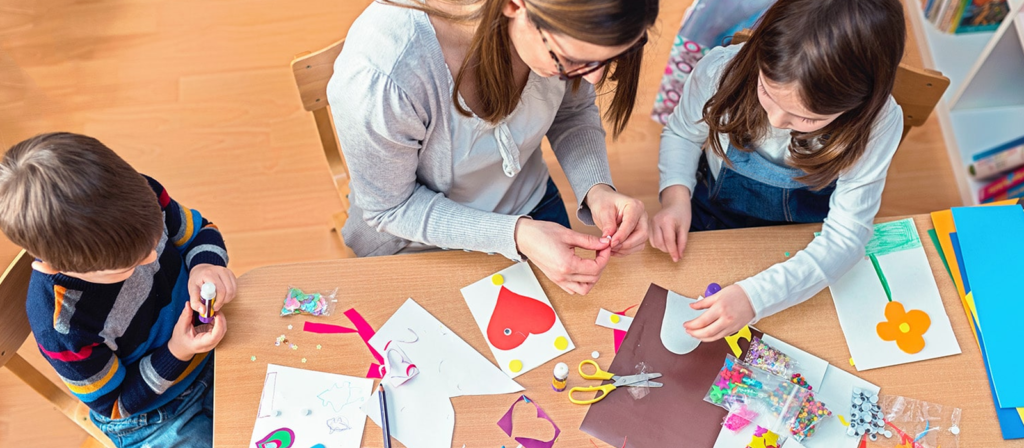
Developmentally Appropriate Practice Example 7: Cultural Awareness
DAP emphasizes respect for every child’s background. A culturally inclusive environment doesn’t just happen by chance; it must be intentionally created. Books that reflect many cultures, images of diverse families, toys representing various ethnicities, and multilingual labels all communicate one clear message: everyone belongs. Teachers who celebrate various holidays throughout the year—not just the mainstream ones—help children understand the value of different traditions.
We provide furniture designed for flexible displays—bulletin boards, shelving units, and cultural corners—so that educators can rotate items relevant to other cultures. Children develop a stronger sense of identity and empathy when their environments honor who they are.
Developmentally Appropriate Practice Example 8: Independence and Responsibility
Young children thrive when they are trusted with responsibility. In a DAP classroom, children help set the table, feed classroom pets, water plants, and manage their own belongings. These aren’t “extra tasks”—they’re essential learning experiences. Our cubbies, coat hooks, labeled trays, and self-access shelving support this philosophy.
When furniture is sized correctly and materials are within reach, children don’t need to ask an adult for help. They become decision-makers in their own learning journey. Teachers scaffold this independence with visual routines, consistent classroom jobs, and expectations that are clear and achievable. This daily practice builds confidence, autonomy, and a lifelong sense of responsibility.
Developmentally Appropriate Practice Example 9: Self-Help and Independence
Developing self-help skills is a cornerstone of DAP, and it begins with how daily routines are structured. Simple tasks like handwashing, toileting, dressing, and cleaning up offer countless learning opportunities. A child who pours their own drink or zips their own coat gains more than a functional skill—they gain self-respect.
Classrooms designed with low sinks, snack stations, toilet training furniture, and visual prompts give children the tools to do things independently. Our child-height washing units and open snack counters are built exactly for these moments. Children don’t need to wait for adult assistance—they learn to take charge in safe, age-appropriate ways.

Developmentally Appropriate Practice Example 10: Safety and Risk-Taking
A developmentally appropriate classroom encourages children to take risks—yes, even at a young age. This doesn’t mean exposing them to danger, but giving them opportunities to test their boundaries in safe, supportive environments. Climbing, balancing, lifting, jumping—these are all essential physical activities that build coordination, strength, and confidence. Our gross-motor furniture, including balance beams, step blocks, and climbing arches, is designed for both safety and challenge. Emotional risks matter, too. Sharing an idea, trying something new, or speaking in front of peers all require bravery.
That’s why our classroom setups include quiet nooks, discussion tables, and soft seating areas to foster emotional security. The balance of safety and challenge is not accidental—it’s intentional, and it is core to the DAP framework.

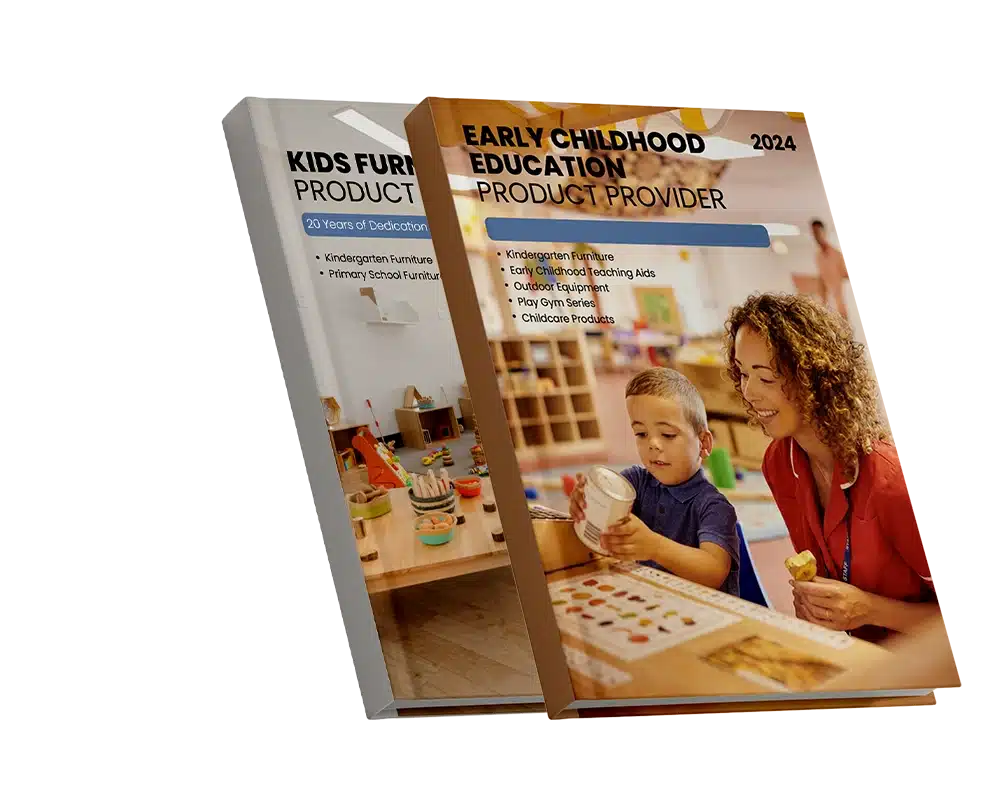
FAQs
1. What is Developmentally Appropriate Practice (DAP) in early childhood education?
Developmentally Appropriate Practice is a research-based framework that emphasizes teaching strategies and environments tailored to the age, individual needs, and cultural background of each child. DAP encourages learning through play, exploration, and hands-on experiences in a safe, child-centered setting.
2. Why is DAP important when choosing preschool or kindergarten furniture?
Furniture that supports DAP helps children access materials independently, promotes responsibility, and encourages active engagement. For example, child-sized tables, open shelves, and flexible seating arrangements all foster autonomy and support learning at each developmental stage.
3. How does DAP align with Montessori and Reggio Emilia teaching philosophies?
Both Montessori and Reggio Emilia approaches are naturally aligned with DAP. They emphasize child-led exploration, respect for the individual child, and the prepared environment. Our furniture is designed with these same principles—child-scaled, open-ended, and adaptable.
4. Can Developmentally Appropriate Practice be applied in classrooms with mixed-age groups?
Yes, DAP is especially effective in mixed-age settings because it focuses on each child’s developmental readiness, not just their chronological age. Furniture and classroom materials should be accessible to a range of abilities, which is why we design adjustable-height desks, multi-use learning stations, and modular play furniture.
5. What are some examples of how DAP looks in practice?
Examples include: children choosing their own materials during free play, teachers using open-ended questions, classrooms with clearly labeled self-help areas, and lessons that connect to children’s real-life experiences. Our classroom setups, storage solutions, and workstations are all created to support these practices.
6. How does DAP help with behavior management and classroom routines?
DAP creates environments where children are engaged, understood, and challenged at the right level—reducing frustration and misbehavior. When children have clear routines, meaningful responsibilities, and opportunities to self-regulate, they are more cooperative. Furniture that supports autonomy—like individual cubbies, calm-down corners, and accessible materials—contributes directly to smoother routines and fewer behavioral issues.
Conclusion
Developmentally Appropriate Practice (DAP) offers more than just a teaching method—it is a comprehensive, research-based philosophy that respects the unique pace, personality, and background of each child. In a DAP-aligned classroom, learning is not forced or standardized; instead, it evolves through observation, interaction, and thoughtful planning. Educators design activities and environments that reflect a deep understanding of child development, allowing children to explore, question, and create in ways that are natural and meaningful to them.
By aligning educational practices with a child’s developmental stage, individual learning style, and cultural identity, DAP fosters a classroom atmosphere built on trust, respect, and active engagement. This approach leads not only to improved academic outcomes, but also to stronger self-esteem, greater emotional resilience, and more effective social interaction. Children learn to think critically, communicate confidently, and collaborate with peers—skills that are essential both in school and throughout life.

